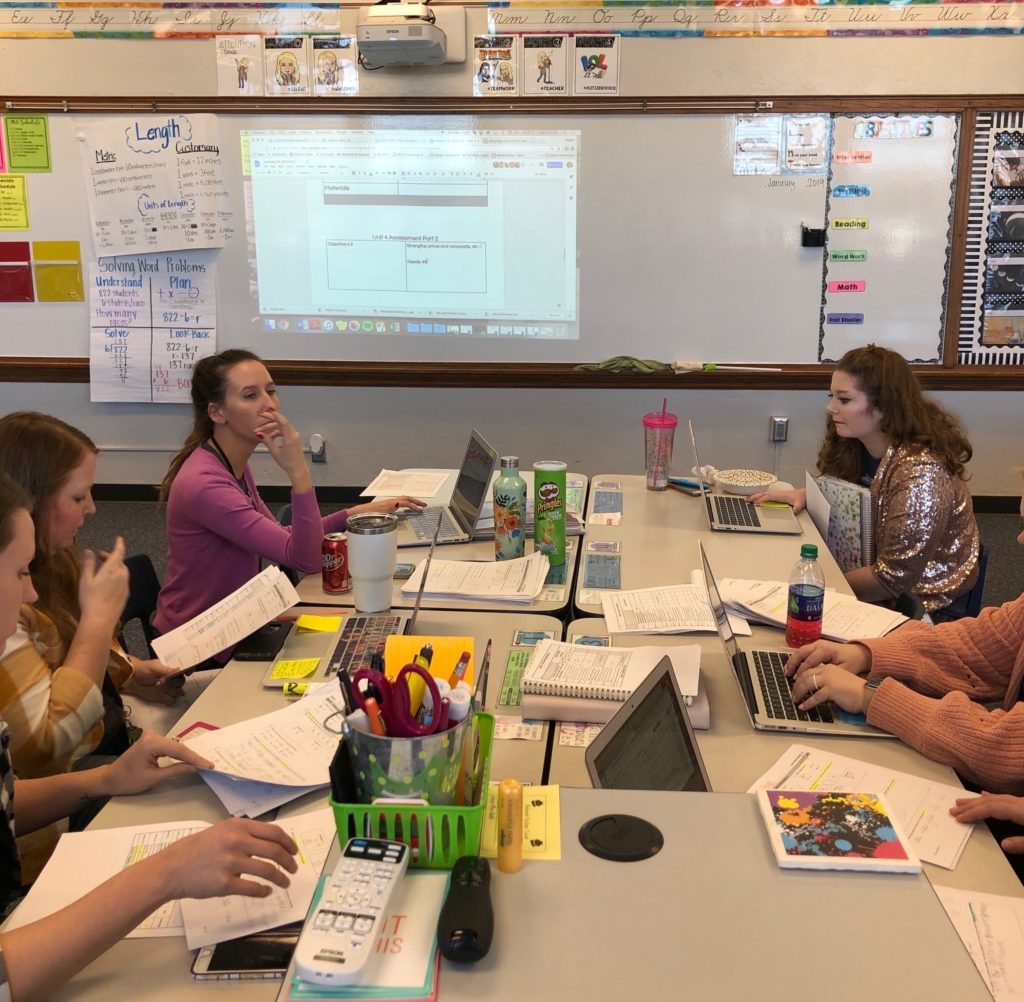Throughout the school year, elementary schools, middle schools and high schools will dismiss early for Professional Learning Community time.
What is a Professional Learning Community?
Professional Learning Communities, or PLCs, are school improvement models aimed at improving student learning for each individual student.
The professional learning community is based on a single, simple premise: To be effective, educators must change their focus from teaching to learning.
In a PLC, educators have three goals
- Ensuring that all students learn. Every classroom includes students of varying abilities. In a PLC, teachers are prepared to serve both the students who learn material quickly and those who need additional time and support. That means developing a coordinated strategy to provide timely intervention when students are struggling.
- Creating a culture of collaboration. In many schools, teachers work in isolation. While staff may come together to formulate basic operational policies (like how to respond to tardiness or supervise recess), they do not engage in professional dialogue about what works in their classrooms. In a PLC school, educators share best practices, join forces to solve problems and work together to improve both their individual performances and the school’s performance as a whole.
- Focusing on results. To ensure that a PLC meets its educational goals, educators must identify students’ current levels of achievement, establish clear educational objectives, work together to meet those goals and provide evidence that they have succeeded.

How do PLCs Work?
In order to ensure that every student is learning, teachers will meet regularly in groups, or PLCs, to focus on individual and overall student learning.
Teams of teachers will look at students’ achievement to see if they are performing at their grade level.
The teams will focus on the answers to four important questions based on the goals above:
• What do we want each student to learn?
• How will we know when each student has learned it?
• How will we respond when a student experiences difficulty in learning?
• How will we respond when a student has already learned essential knowledge and skills?
At the beginning of the school year, and then at weekly, monthly, and quarterly meetings, teachers will gather information and data about every student on their literacy and math skills. If a student needs individual help, teachers will be scheduling extra time to work with that student.
Why are there Early Release Dates?
PLCs require time dedicated for this dialogue to occur. The most effective collaboration comes from time set aside specifically for this purpose, separate from traditional teaching and planning time. These collaborative teams need an extended period of time to focus on individual needs and to work together toward solutions.
What are the Early Release Dates?
What are the early release dates? Elementary and middle schools will dismiss 80 minutes early one day a month for PLC days. High schools will release one hour early each Tuesday of the school year for PLC days. To see the early release dates for this school year, please view our academic calendar.
Resources for Staff
(you must use your LPS credentials in order to view the resources)
